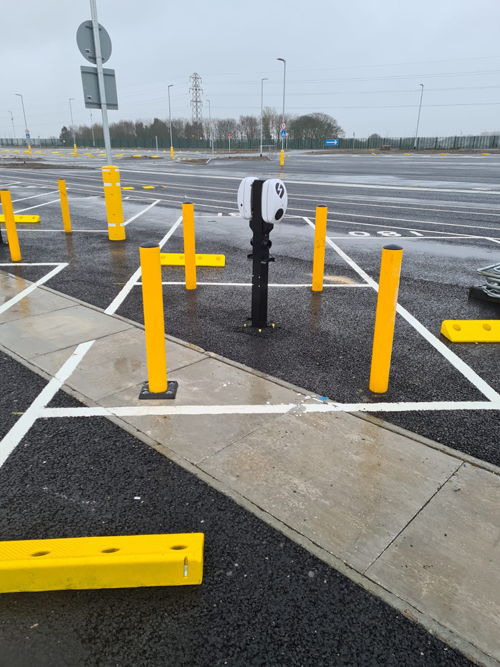
Q&A: Alan Grant, Agility3 – leading digital transformation in construction
Construction is one of the least-digitised industries in the UK, and this lack of digitalisation could be hampering construction companies in a very competitive marketplace. We speak with Alan Grant at Agility3, a leading solutions provider in the development of bespoke, high quality virtual 3D content and interactive 3D applications, who shares his thoughts on digital transformation in construction and how he believes we are now at a critical turning point for the industry.
What does digital transformation look like for the construction industry and what challenges does it present?
Digital transformation is, in essence, replacing old ways with new ways. It is utilising the technologies that are available, such as BIM, Digital Engineering, Big Data and 3D/4D visualisation, to improve operational processes, efficiencies and performance within construction.
It is not a new concept by any means, but the construction industry as a whole has been slow to adopt new technologies. This is understandable and can be attributed to a number of common challenges. Firstly, an unclear definition and understanding of what digitalisation actually means. Lower margins and restricted R&D budgets, which reduces the investment available for new technology. A fear of and resistance to change. Fragmentation of the industry, with a typical construction project involving large numbers of suppliers and subcontractors, making implementation of digital solutions across multiple companies and users complex. Silo working, which brings with it un-standardised processes and data, and can prohibit a collaborative approach and inability to train multiple users in new technology. Indeed, recent reports show that about 32% of firms are currently spending less than 3% of turnover on digital technologies.
How can construction companies overcome these challenges?
3D and 4D modelling, simulation, AR, VR and immersive technologies are almost limitless. They offer so much more insight and knowledge to projects that a simple 2D format just can’t – being able to have a virtual walkthrough of a building before, during or after a project, is immensely powerful. It is a fascinating and exciting area that offers significant benefits to the construction industry, and one that I am deeply passionate about.
In order to utilise it to its full potential, we need to see a cultural shift within construction companies. Getting people across the whole organisation to adopt a mindset, behaviour and approach change to realise the value it can bring. No easy task, but when you consider that research shows digital transformation can result in productivity gains of up to 15% and cost reductions of 6%, it is change that construction companies cannot afford not to make.
For me, the key to achieving this is what I refer to as PPIT – People, Process, Information and Technology. You cannot enforce technology and process, without first bringing your people on board – it just won’t work and companies will fail to embrace the new digital technology. Through educating and explaining the technology and process, they can start to use it efficiently in standard work processes and witness the benefits for themselves. The transformation starts with the individuals and radiates out throughout the organisation.
We need to educate that digitalisation is not just simply installing new IT solutions. It is as much about operational change as it is about technological change. It will fix pain points, enable collaboration in real-time, reskill teams and ultimately unlock increased value and performance, whilst significantly reducing time and costs. Only by understanding this can the entire workforce, from the C-suite to the frontline, truly harness the power of digital transformation.
What are the benefits that it brings?
The benefits of adopting digitalisation are vast. From increased business and employee productivity, improved health and safety rates, business growth and new wins, closer collaboration with real-time feedback, improved training, through to reduced operating costs.
Why do you feel we are now at a critical turning point?
This isn’t something that is going to go away. It isn’t some sci-fi vision of the future. This is happening now and it is a case of construction companies coming on board or being left behind in this competitive market place.
Some of the bigger names in the industry who are adopting these technologies are making significant gains. We are seeing an uplift in desire to embrace these new and emerging technologies and realise all the efficiency savings they bring.
At the start of my career, I worked for one of the UK’s leading contractors and experienced first-hand the operational difficulties and inefficiencies they had due to out of date processes, as well as the alarmingly high health and safety and accident rates. Through my passion for visualisation technology, I worked with them to develop a number of apps to help improve efficiencies. These included virtual simulations of any accident, to improve training and prevent future health and safety risks, as well as 3D modelling to predict accurate excavations volumes. The result? Technology created a process which provided savings of £5 million and significantly reduced health and safety incidents.
This belief and passion in what technology can do for the industry, is what brought me to Agility3. The team here create bespoke interactive 3D and 4D visualisation applications, helping clients to visualise proposed complex plans in a virtual world. These applications allow for an ease of understanding, realisation of the impact on surrounding areas, and the ability to watch the progress of development throughout a project’s lifecycle.
A recent project we worked on here at Agility3, saw us developing a bespoke 4D visualisation application for an industry leader in the delivery of major rail and highway infrastructure projects. The application helped their prospective customer to understand and visualise the proposed plans for the construction over the next 5 years. The 4D functionality allowed full view of the construction activities that would take place on any one day, giving clear visibility and significantly improving stakeholder engagement and collaboration.
The impact that these technologies offers to the construction industry is truly significant.
What does the future hold?
The challenges construction faces are real, but they can be overcome. With what we at Agility3 offer, as well as others, I predict that instead of a resistance to change we will start to witness an increased demand for these technologies.
The industry is only going in one direction – digital. It offers abundant opportunity for the construction industry to evolve and grow and the time for digital transformation within construction is now.
If you’d like to learn more about how Agility3 can develop interactive visualisation applications to support your development project, please get in touch at info@agility3.co.uk or call on (+44) 01438 488066.

 parks, ImpactSAFE Protection Posts are available in either 600mm, 800mm or 1000mm height options. These bollards are strong and robust and feature different colour options to suit individual requirements, offering added safety and visibility for vehicle drivers when they are either reversing up to or pulling alongside a charge point.
parks, ImpactSAFE Protection Posts are available in either 600mm, 800mm or 1000mm height options. These bollards are strong and robust and feature different colour options to suit individual requirements, offering added safety and visibility for vehicle drivers when they are either reversing up to or pulling alongside a charge point.



